Alien Landscapes 2
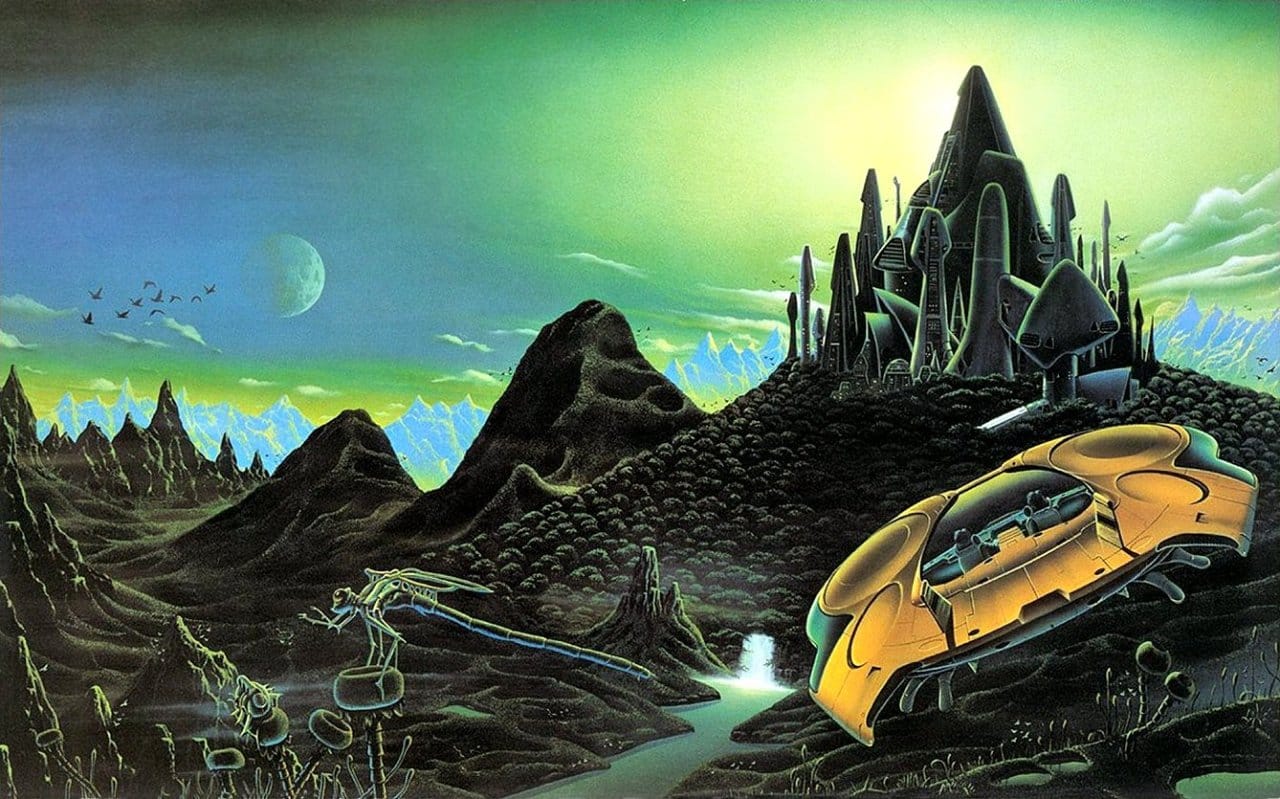
Detours into the tiny corners of science fiction art history are great for learning more about gas masks or vikings, but sometimes we need to take a beat to appreciate the basics: Gorgeous planetary scenes with forbidding towers, glowing pyramids, and two purple suns.
Desktops in need of backgrounds rejoice: It's time for round two of my alien landscape roundups!
Here's the surface of Mercury, as envisioned by Chesley Bonestell way back in 1948.
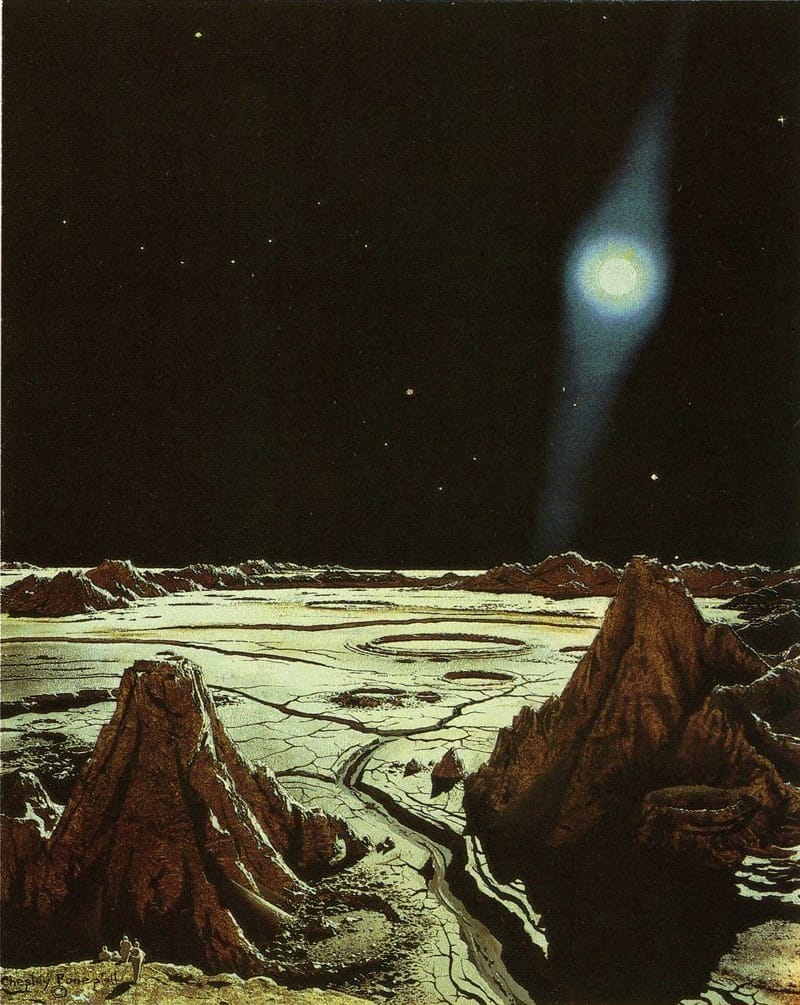
One of Paul Lehr's surreal landscapes. I couldn't find a date for this one, but it resembles a lot of his '90s artwork.
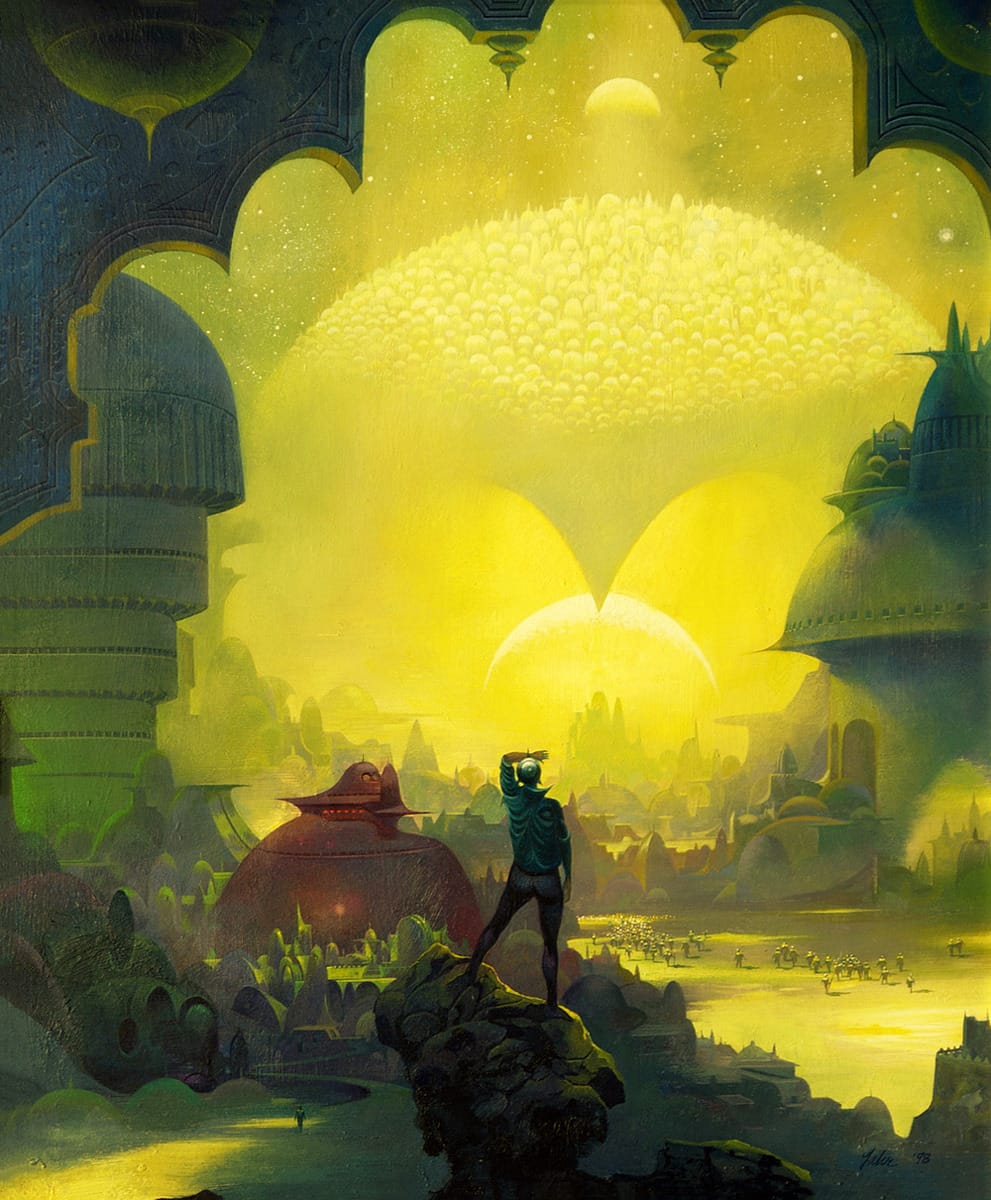
Contrast that one against this earlier illustration, Lehr's 1976 cover for The Ramsgate Paradox, by Stephen Tall. Very different and yet very similar. Tiny crowds of people emerging from distant cities? Lehr is a fan.
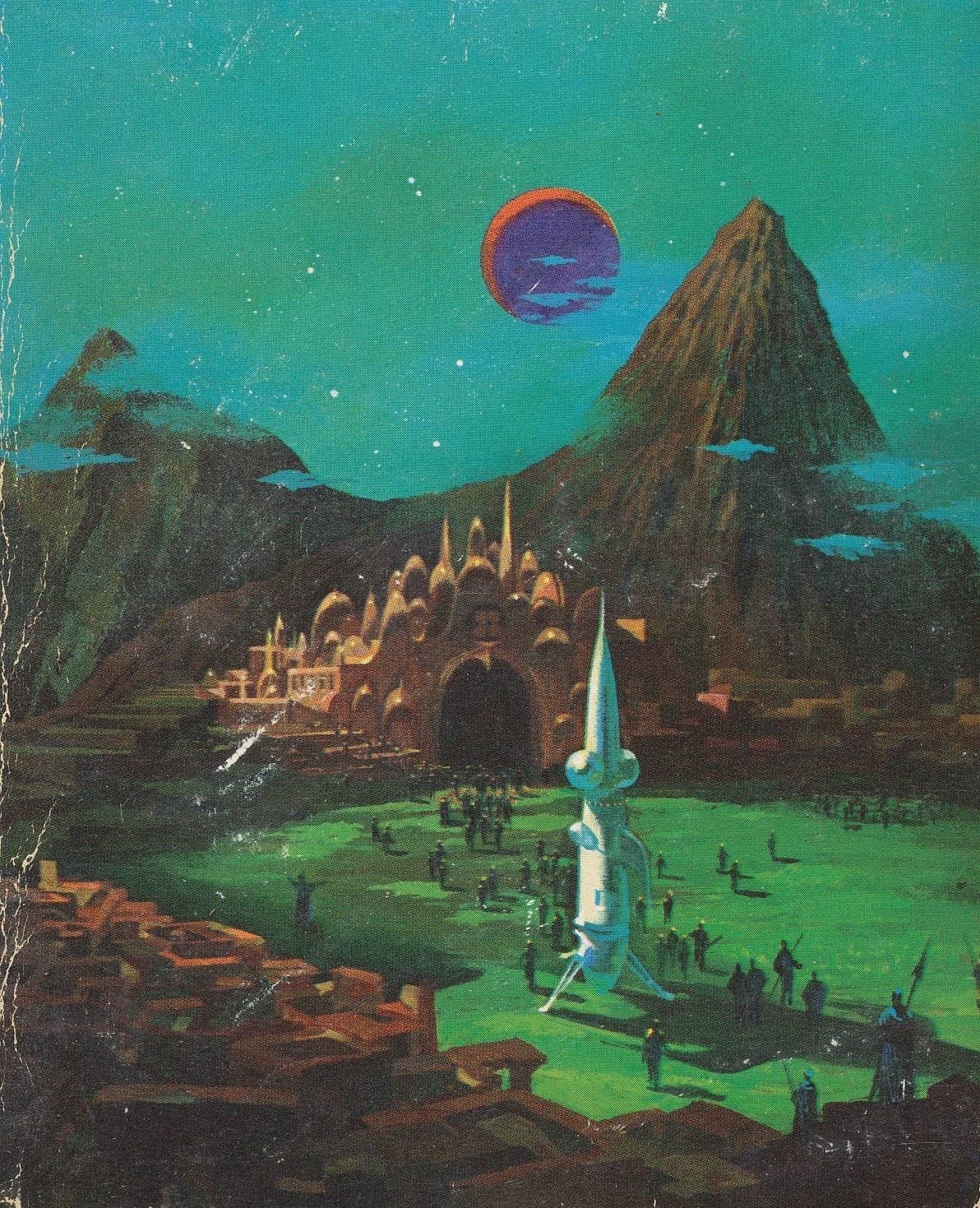
John Harris's landscape scene, titled "The Twin Parliaments of Pyrrhus" and done for the 2017 John Scalzi title The Back Channel. Here's what he says about it:
“This was done without the benefit of any script or idea about the story it was to accompany. So I was free to dream. Here, I envisage a new architecture, ‘grown’ using advanced DNA techniques to produce buildings that absorb starlight to provide energy. The light in the piece is everything. I used a very subdued palate to emphasise the valuable resource of light itself.”
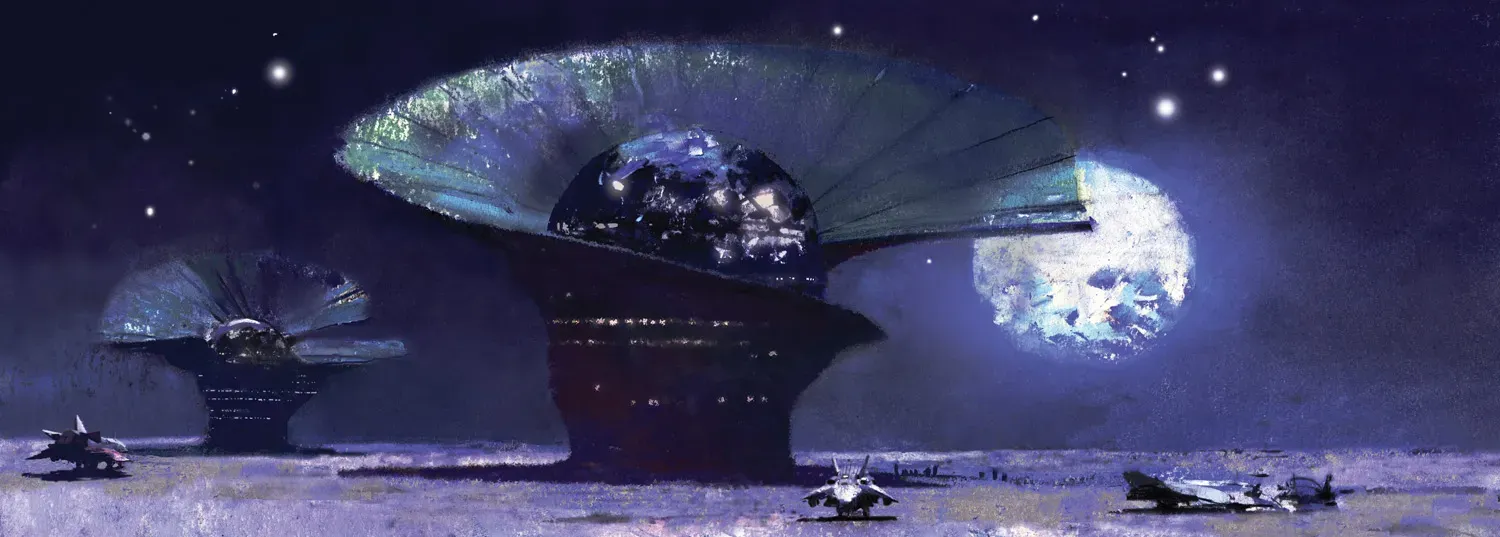
Tony Roberts did this 1980 album cover for Saga's Silent Knight. This is a great example of why I love this era of art: It's filled with details, but I still can't say exactly what's going on here.
Are all these towers actually housing giant bugs? I guess so, since I can see other giant bugs flying in the distance. So are they in cocoons? Or are they trapped and placed in a ring around that spire to ward off other bugs?
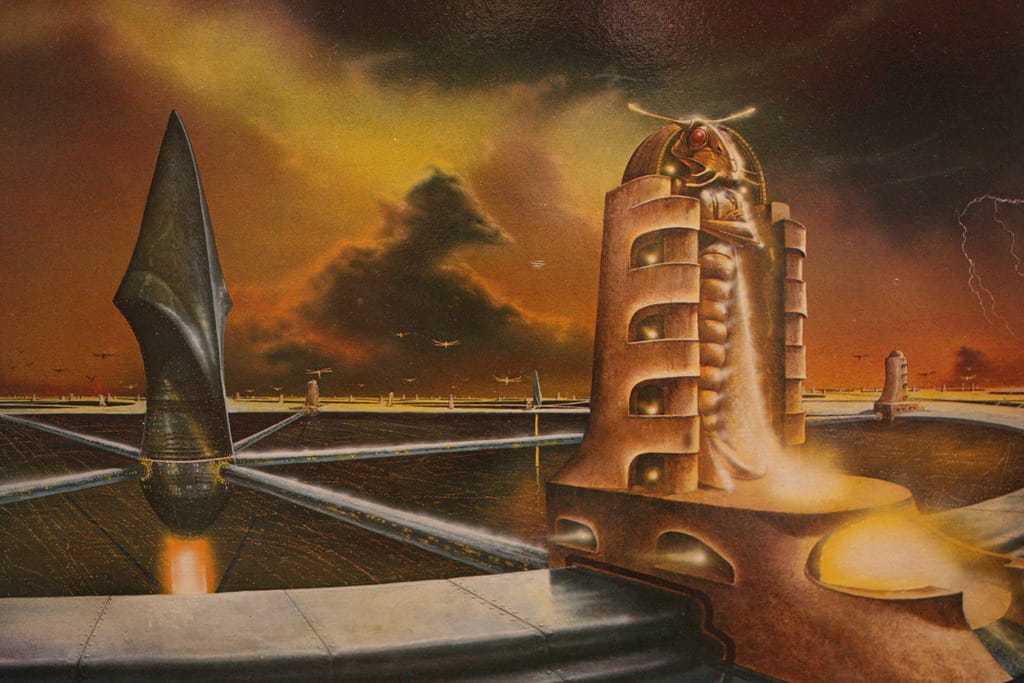
Next up is "Proxima," by David A. Hardy, done in 1972 for Challenge of the Stars, with Patrick Moore. He writes on his site:
"The most effective extrasolar scenes are often those with a red sun, whether a red supergiant or a dwarf. One of the latter is our closest stellar neighbour, Proxima Centauri, a small member of the Alpha Centauri triple system. [...] In order to have liquid water, the planet would need to orbit the red star in 10 days. The constellation Cassiopeia can be seen, with an extra star – our Sun."
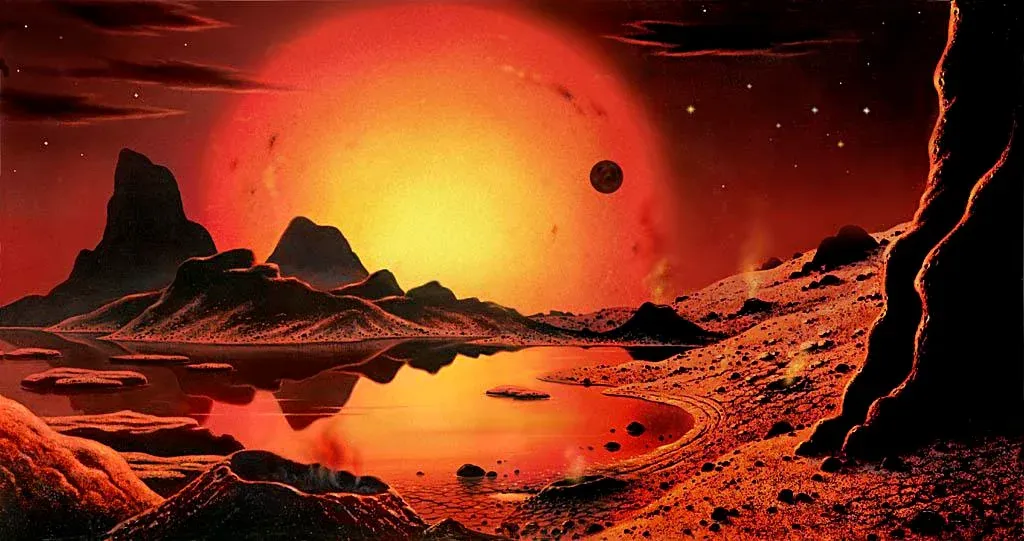
17 years later in 1989, Hardy painted this companion artwork. "This time we look in the opposite direction and see the twin, sunlike stars of Alpha Centauri A & B."
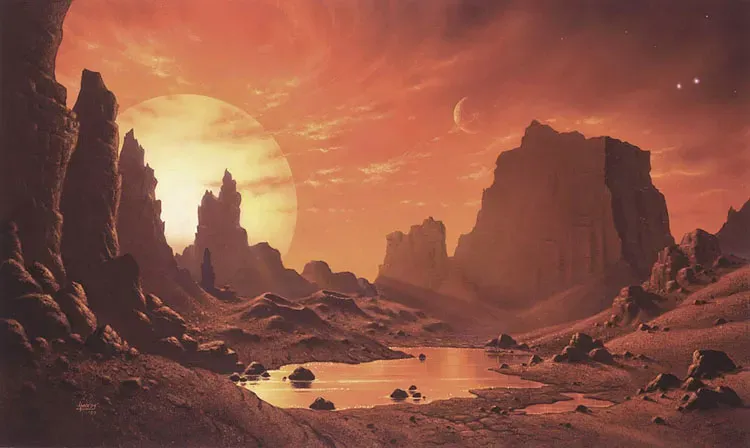
"The Ladder" by Roger Dean is a real classic. This one was my desktop background for a while.
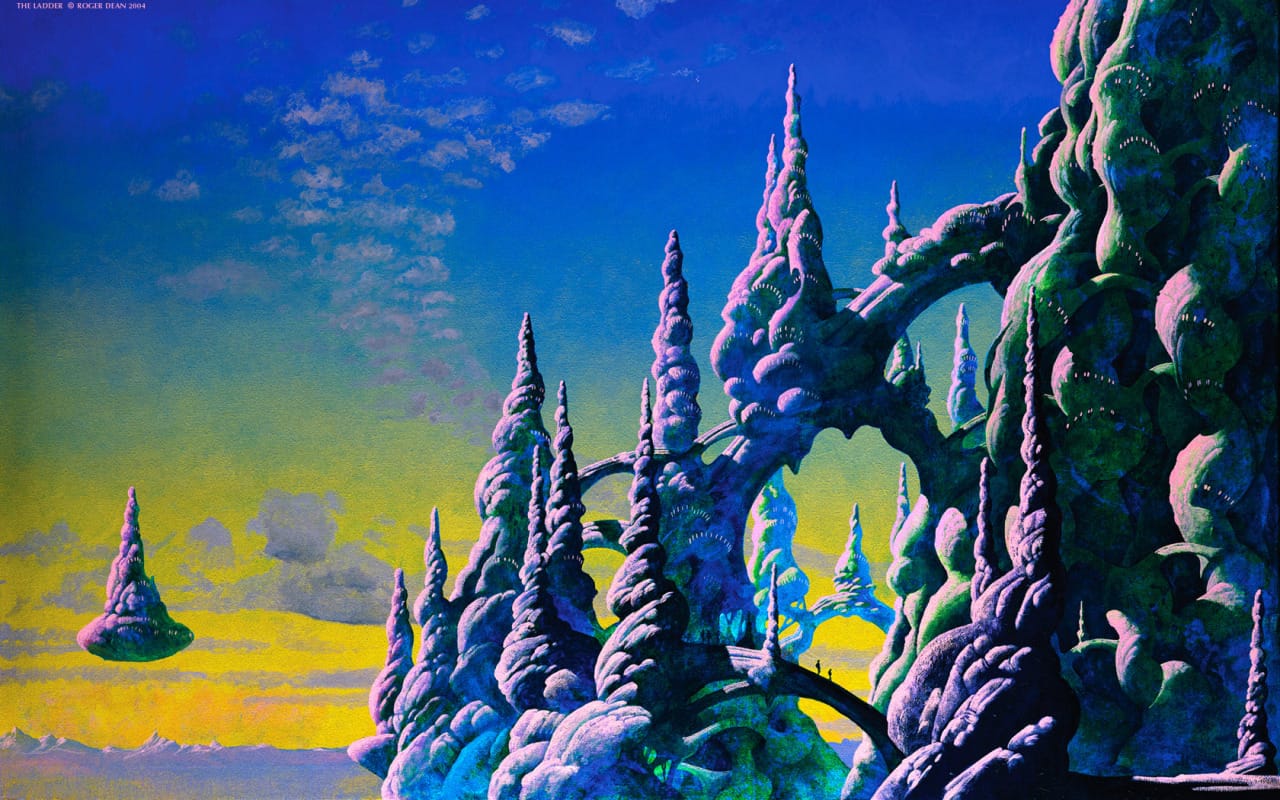
Jim Burns' 1986 cover for Greg Bear's Eon, featuring the ground side of the Hexamon Nexus (at least according to this commenter).
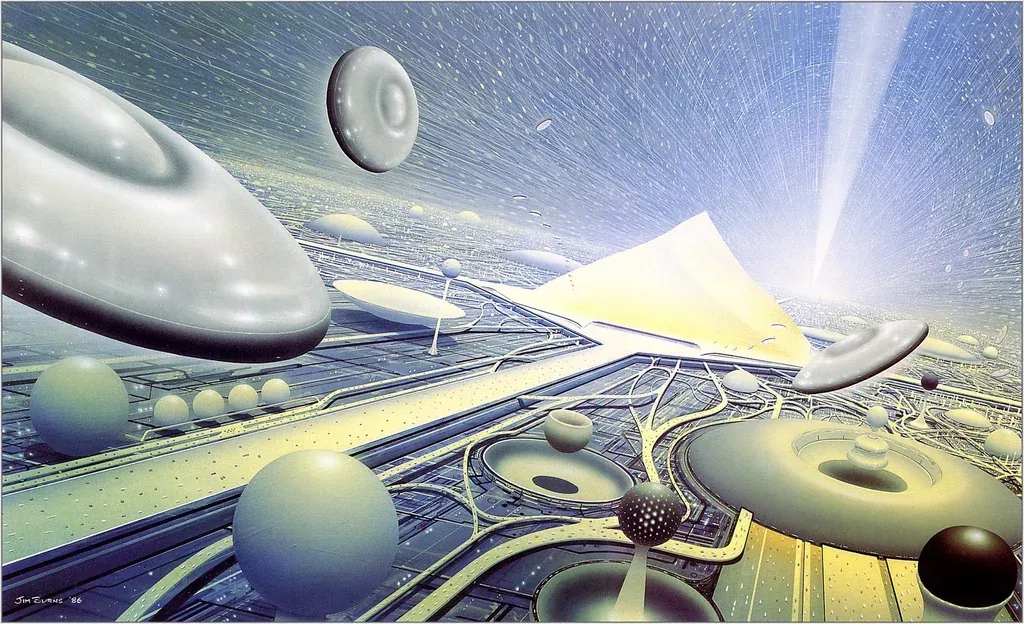
Karel Thole's 1973 cover for a German edition of They Shall Have Stars by James Blish.
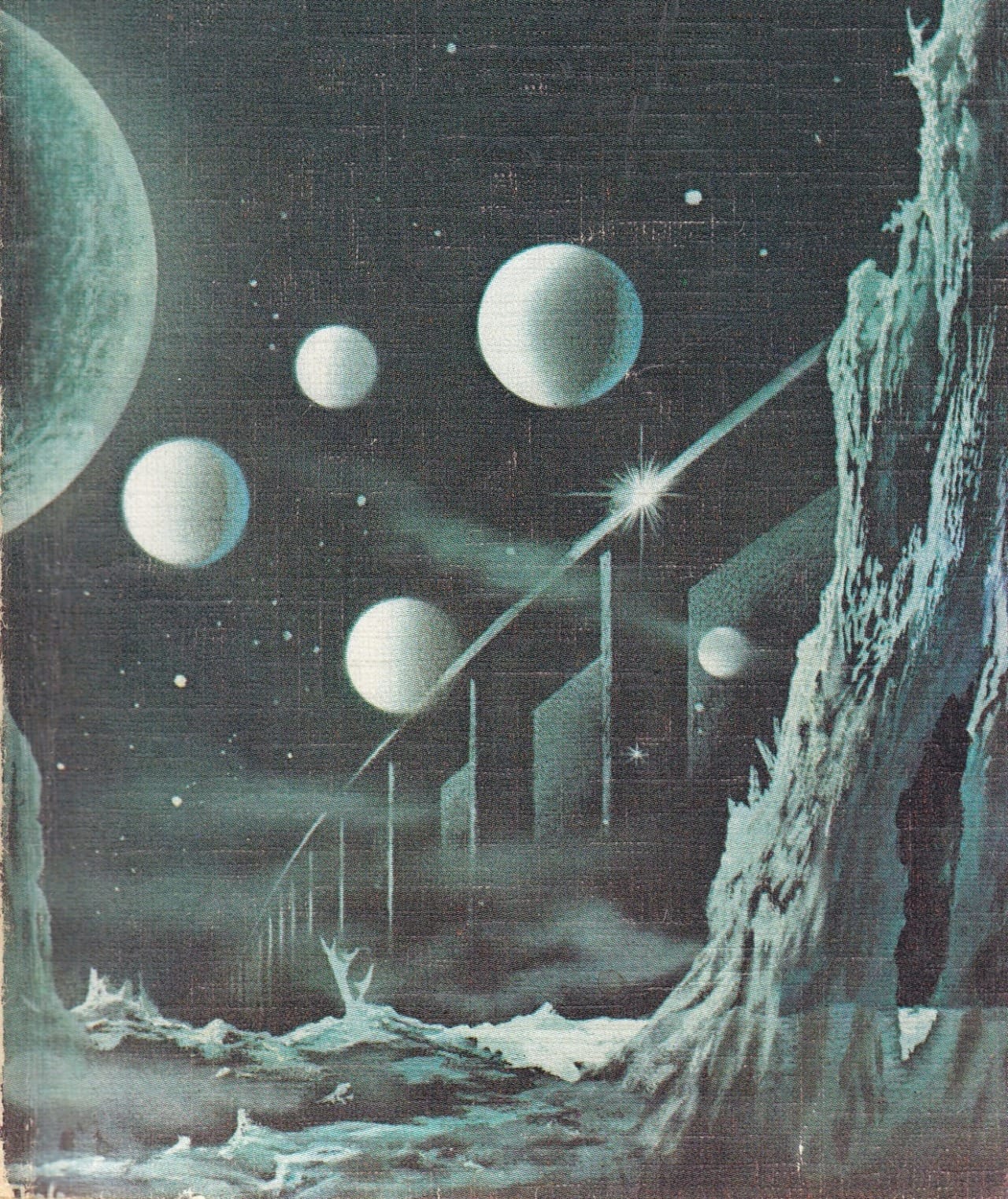
Finally, "Omnivore," 1976, by Peter Andrew Jones, features a fun vehicle. Wonder if it's gyroscopic? Scan from Retro Sci-Fi Art.
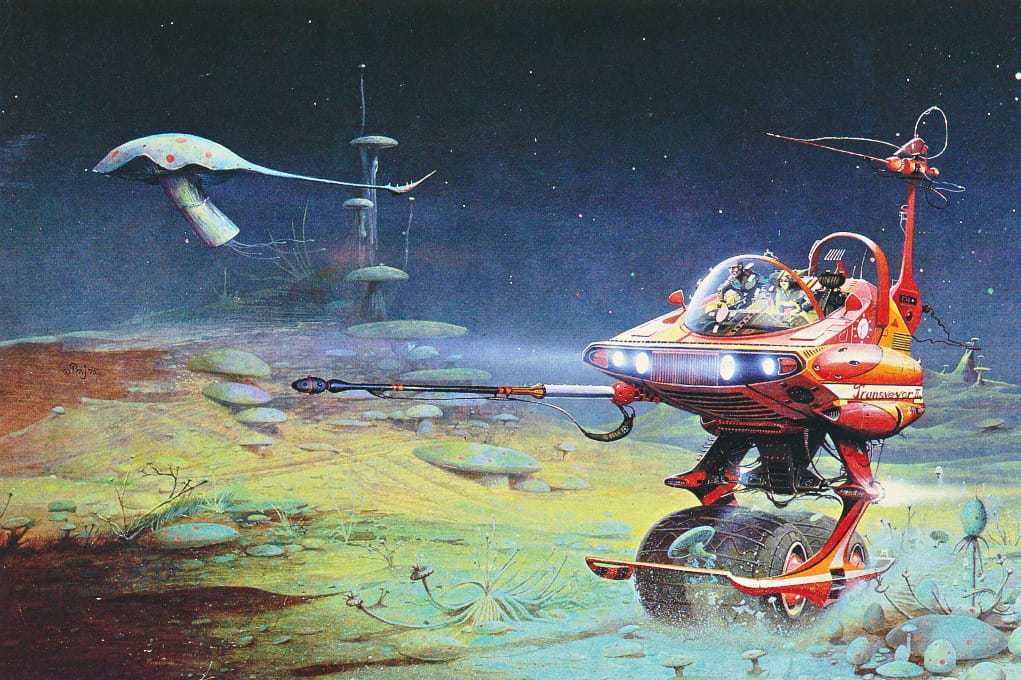
Music rec: Oppidan | Boiler Room SYSTEM: Bristol
Next Time: Odds and Ends